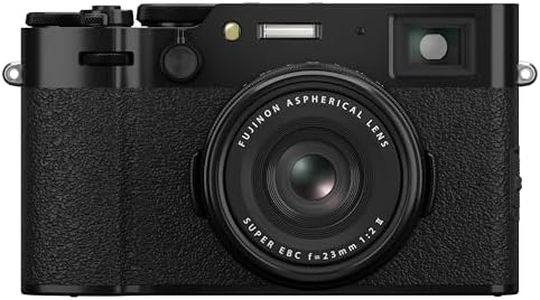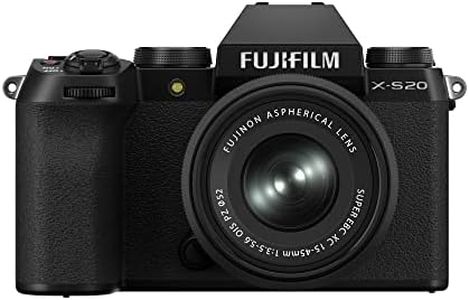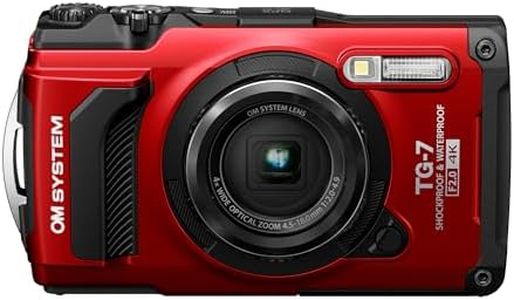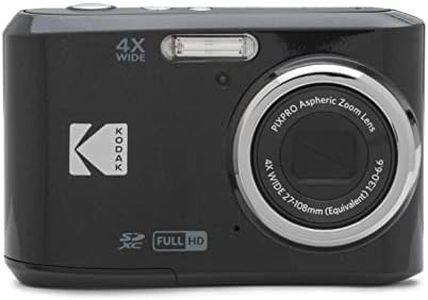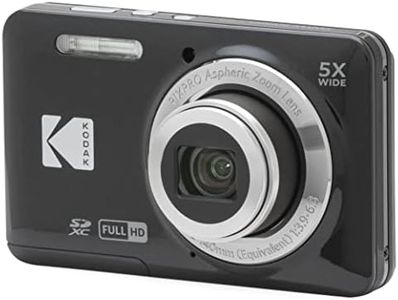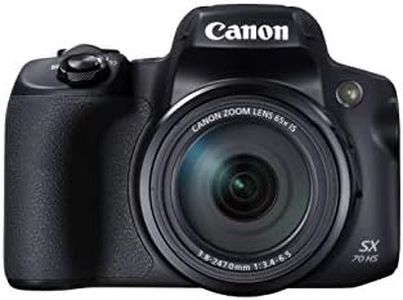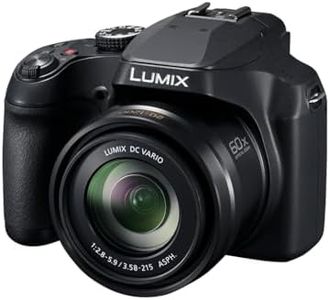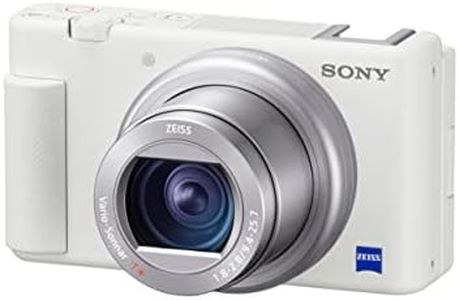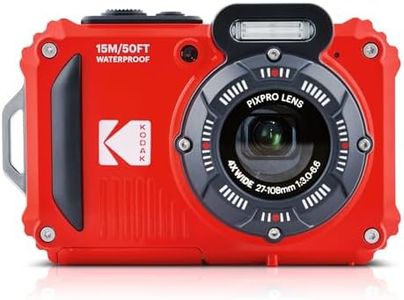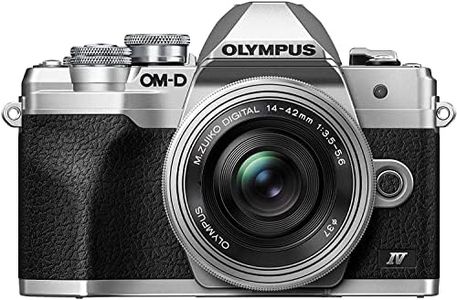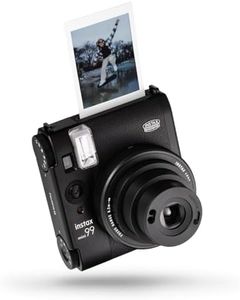We Use CookiesWe use cookies to enhance the security, performance,
functionality and for analytical and promotional activities. By continuing to browse this site you
are agreeing to our privacy policy
10 Best Compact Cameras
From leading brands and best sellers available on the web.By clicking on a link to a third party's website, log data is shared with that third party.
Buying Guide for the Best Compact Cameras
Choosing the right compact camera can make a big difference in how you capture and enjoy your photos. Compact cameras are designed to be portable, easy to use, and versatile for a wide range of situations, making them perfect for those who want more than a smartphone but don’t want the bulk of larger cameras. When picking one, think about how you’ll use it: will you be traveling, photographing family events, or just looking for an everyday camera? Understanding your needs will help guide your choice among the various features available.Sensor SizeThe sensor size in a compact camera determines how much light the camera can capture, which affects both image quality and low-light performance. Generally, larger sensors can create clearer, more detailed photos, especially in dim lighting. Sensor sizes in compact cameras commonly range from small (1/2.3-inch), medium (1-inch), to larger sizes like APS-C. If you want the best image quality and often shoot in low light or want the ability to blur backgrounds, look for cameras with bigger sensors; if you mostly shoot in daylight or want the smallest possible camera, a smaller sensor may suit you well.
Zoom RangeZoom range determines how close you can get to distant subjects without moving. Compact cameras offer different levels of optical zoom, usually measured as 3x, 5x, or even up to 30x and beyond. A smaller zoom range keeps the camera slim and easier to handle, often with better image quality at the wide and short ends. A higher zoom is useful for travel, nature photography, or sports where you can’t get close to the action. Choose your zoom range based on whether you’ll need to capture subjects far away or are happy with mostly wide and portrait shots.
Image StabilizationImage stabilization helps reduce blurry photos caused by hand shake, which can be especially helpful at longer zooms or in low light. Most compact cameras now include some form of stabilization, either optical or digital. Optical stabilization often gives better results. If you plan to shoot in less-than-ideal lighting or don't want to carry a tripod, look for good image stabilization to help you capture sharp pictures.
Autofocus PerformanceAutofocus (AF) tells you how quickly and accurately the camera can focus on your subject. Fast, reliable autofocus is important for capturing moving subjects, like children, pets, or sports. Some compact cameras have advanced systems that track subjects and lock focus almost instantly, while basic models may be slower or struggle in low light. If you often take action photos or snapshots of unpredictable moments, prioritize a camera with quick and dependable autofocus.
Manual Controls and ModesMany compact cameras offer different shooting modes ranging from fully automatic to full manual. Automatic modes are helpful for beginners or casual shooters, making it easy to get good results with minimal thought. Manual controls allow more experienced users to adjust key settings like shutter speed, aperture, and ISO, giving more creative flexibility. If you enjoy experimenting or learning photography, check for a camera with manual options; otherwise, an easy, intuitive auto mode might be all you need.
Size and WeightSize and weight are obvious but important factors in compact cameras. Some are genuinely pocket-sized and can travel everywhere with you, while others are a bit larger to accommodate bigger sensors or longer lenses. Think about whether you want the camera to fit in your pocket, purse, or if you’re okay with carrying it in a small bag. Pick a size that matches your lifestyle so you’ll actually take the camera with you and use it.
Screen and ViewfinderCompact cameras usually have either an LCD screen or, less commonly, a viewfinder for composing photos. Larger, higher-resolution screens make it easier to frame shots and check focus. Some screens tilt or flip, which is useful for selfies or shooting from unusual angles. A viewfinder helps in bright sunlight when screens are hard to see, and can make holding the camera steadier. Choose based on how you like to shoot and whether you’ll be outdoors in bright conditions often.
Video CapabilitiesIf you plan to record videos, look at the camera’s video quality—many now offer Full HD (1080p) or 4K resolution. Higher resolutions mean sharper, more detailed footage, but also use more storage. Pay attention to features like video stabilization, autofocus during video, and external microphone support if you want better sound. If video isn’t important to you, basic video features may be enough; if you plan to vlog or create content, more advanced video options could be worth seeking out.
Wireless ConnectivityWireless features like Wi-Fi or Bluetooth let you quickly transfer photos to your phone or computer and sometimes control the camera remotely. This is especially handy if you want to share your photos on social media or back them up easily. If you’re a frequent sharer, look for a camera with simple, reliable wireless transfer features; if you don’t mind transferring with a cable or card, this may be less important.
